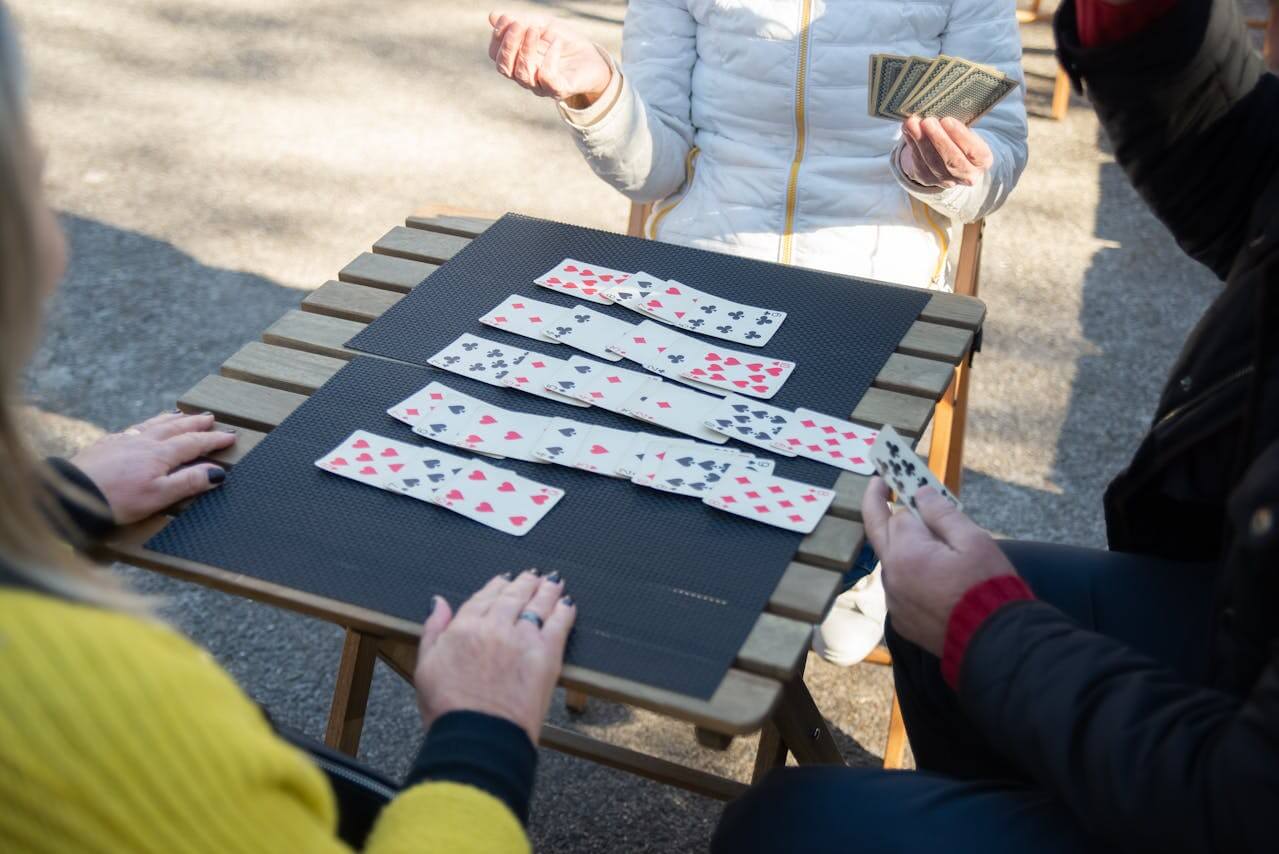

There comes a time in every playing card enthusiast’s life that they find themselves in want of other players and of course, it is a universal experience that people simply had time to spare while having a deck of cards on hand. It is these times that the single-player card game, solitaire comes to the rescue!
This simple game is more of a puzzle than a game and has not lost its appeal since the 1700’s. It even enjoyed a boost in 1990 on Windows computers. So if you’re short on a player for other card games like Uno, consider solitaire.
This article focuses on the most popular version that is considered a classic, Klondike Solitaire. Find out more about the rules, strategies, and variations. Learning how to play solitaire would be the easiest thing you do today.
Objective
In solitaire, the card rankings are: K (highest), Q, J, 10, 9, 8, 7, 6, 5, 4, 3, 2, A (lowest).
The goal of the game is to arrange all 52 cards into piles by suits and in ascending order from the Ace to the King.
Setup
To begin the game, arrange your cards on the playing board as follows:
- Deal the Tableau
From left to right, deal a shuffled deck into 7 cascading columns known as the Tableau that makes up the main board.
Place a card in the 1st column face-up and deal a card face down for the next 6 columns. Then, place a card in the 2nd column face-up and deal a card face down for the next 5 piles. Continue this pattern until the top card in the 7th pile is facing up on top of a column of 6 cards facing down. You should not deal cards directly column by column.
- Place the Stock / Hand pile
Put the remaining undealt cards in the Stock pile, which is the draw pile to bring cards into play. This pile is usually placed above the first column of the Tableau.
- Leave room for the Waste / Talon pile
Leave space next to the Stock pile for the discard pile. Cards from the Stock pile that cannot go into the Tableau or Foundations are put face-up here. At the beginning, there is nothing in the Waste pile.
- Leave room for the Foundation piles
Allocate space for 4 piles where each suit of cards must be built up in ascending order, starting with Aces at each base. These are usually arranged above the last 4 columns of the Tableau. At the start, the foundations do not have any cards.
Gameplay


Follow these simple steps and rules to start playing solitaire:
“Building”
Cards can move around in the following ways:
- Color match: Stack the face-up cards in the Tableau in descending order and in alternating colors. The suit does not matter.
- Foundation piles: If there are any face-up Aces, they can go into the corresponding suit in a Foundation pile. Subsequent cards can be built on the Foundations in ascending order. The top Foundation cards can be moved down to the Tableau if needed.
If the top card of a column is moved, turn over the card underneath to reveal a new card that can be played. The top card of each column should be face-up. Remember that only face-up cards can be moved or played. Face-up cards can be moved individually or by entire columns at one time.
Drawing
If you can’t move any more face-up cards, draw from the Stock or Waste piles and play it as a face-up card. Only the top card of the waste pile can be drawn at a time.
For an easier game, draw cards one by one. For a challenge, draw cards three by three and place them on the Waste pile. These drawn cards must be played in sequence that cannot be skipped: 3rd, 2nd, 1st.
Discarding
If you cannot play a drawn card in the Tableau or Foundations, put it in the Waste pile. Redraw as needed. When the Stock pile is finished and there are no more viable plays, simply flip over and reuse the Waste pile. Do not shuffle the Waste pile.
Filling in “spaces”
If there is an empty column in the Tableau left behind by moving all the cards elsewhere, it becomes a new space to stack cards allowing you to uncover more face-up cards. However, the space can only be filled with a King. This can be a single King card or an entire column that begins with a King. Empty columns cannot be used to hold cards other than a King.
Winning
Keep moving cards around until all cards are arranged in the Foundations (win) or no more moves are possible (lose). If any cards are mistakenly left out or are out of sequence in the Foundations, you also lose.
Strategy


Here are some top tips to help you ace solitaire:
- Target the longest columns with lots of face-down cards. Try to rearrange as many face-up cards as possible to open up more playable cards.
- If there is a King on top of other cards, target the shortest columns with the least face-down cards so that you can move the King to a new space and unblock the cards beneath it.
- Start by cycling through the Stock pile to find Aces and other cards to build Foundations or the Tableau immediately.
- Pay attention to revealed cards to plan your moves.
- Save moves by checking the Waste pile before drawing from the Stock pile.
- Play low-numbered cards on a Foundation pile whenever possible to clear cards faster.
- Build the Foundations at a roughly even rate. As each card only comes in two colors, having one trapped in the Foundations too early will get you stuck when you need it.
Variations
There are a myriad of solitaire versions, some of which have different shapes, use multiple decks, or involve multiple players. Here are some to check out:
- Yukon: 21 cards are dealt face-down and the remaining cards are dealt face-up in 6 columns.
- Spider: 2-deck game with 10 columns.
- Forty Thieves: 2-deck game and all cards are dealt face-up in 10 columns.
- FreeCell: All cards are dealt face-up in 8 columns and have 4 “free” cells to temporarily hold cards.
- Golf: The goal is to play all cards in the Tableau instead of building Foundations.
- Pyramid: Pyramid-shaped Tableau. Also known as Solitaire 13 and Pile of 28
- Baker’s Dozen Solitaire: All cards are dealt face-up in 13 columns and alternating colors is not required.
- Little Spider Solitaire: Has 2 Tableaus and 2 Foundations must be build in ascending order with 2 more in descending order
- Accordion Solitaire: All cards dealt 1 row to be built into 1 Foundation of 52 cards. Difficult to win.
- Poker Solitaire: Build a 5-by-5 grid to make the best possible poker hand in each row and column. A
Start playing
So now that you know how to play solitaire, all you need is a standard 52-card deck and you can start building those Foundations. Whether you’re seeking some alone time or chill quality time with friends and family, solitaire can be the game for you!






